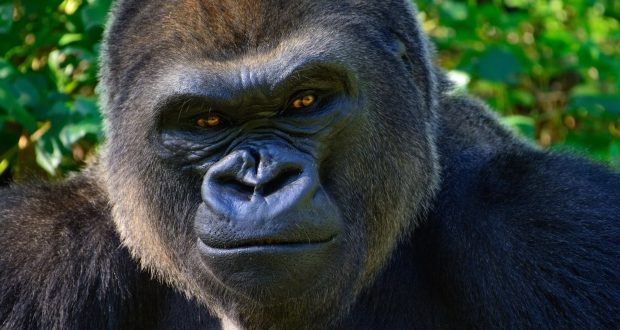UGANDA AT A GLANCE
Uganda is a landlocked country in East Africa whose diverse landscape encompasses the snow-capped Rwenzori Mountains and immense Lake Victoria. Its abundant wildlife includes chimpanzees as well as rare birds. Remote Bwindi Impenetrable National Park is a renowned mountain gorilla sanctuary. Murchison Falls National Park in the northwest is known for its 43m-tall waterfall and wildlife such as hippos.
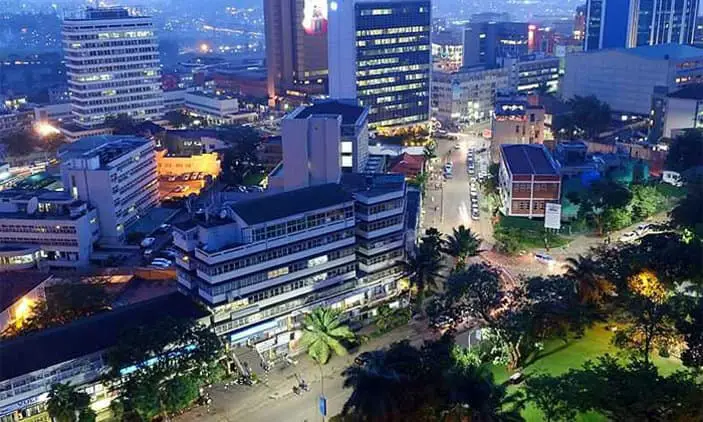
HOW TO PLAN A UGANDA SAFARI
Most tourist tour Uganda to see the Gorillas, it is well known for Gorillas, basically, we will cover Gorilla trekking in Uganda.
So, you have decided Uganda it is? And finally, time to fulfil your dream of meeting the mysterious mountain gorillas, climb the Rwenzori Mountains or see the Big 5? I am here to help you with planning your dream safari.
The first step to plan your Uganda safari is to think about how long you wish your safari to be. Do you have time for a long three weeks holiday or just a few days? For a gorilla trekking safari, the minimum length is 3 days, not counting your arrival and departure time. If your desire is to reach the peak of the Rwenzori Mountains you have to allow seven days for the hike as well as travel days to hike the mountain and back to Entebbe. With that said many decide to come for a safari to Uganda wish to discover more of this incredible country, since Uganda is so diverse you can be kept busy for three or so weeks.
BEST TIME TO GO
You can travel to Uganda any time of the year, being at the Equator the seasons here don’t vary that much despite the dry seasons and wet seasons. Planning your safari during the dry season reduces the risk of rain but also means that you are travelling during the high season so it is a tradeoff between travelling in busy times and wishing to minimize the risk of rain. The high seasons last from June to August and mid-December to February and this is the driest times of the year. The wet season in Uganda is not really much, it can rain once a day. So, it is a non-issue to travel at this time of the year.
WHY TRAVEL TO UGANDA (TOP THINGS TO SEE)
Bwindi Impenetrable National Park Uganda

Bwindi Impenetrable National Park is the home of The Mountain Gorillas, it lies in southwestern Uganda on the edge of the Rift Valley. Its mist-covered hillsides are blanketed by one of Uganda’s oldest and most biologically diverse rainforests, which dates back over 25,000 years and contains almost 400 species of plants. More famously, this “impenetrable forest” also protects an estimated 400 mountain gorillas – roughly half of the world’s population, including several habituated groups, which can be tracked.
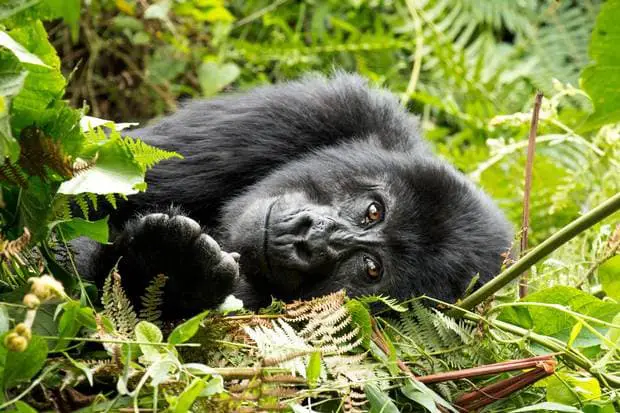
This biologically diverse region also provides shelter to a further 120 mammals, including several primate species such as baboons and chimpanzees, as well as elephants and antelopes. There are around 350 species of birds hosted in this forest, including 23 Albertine Rift endemics.
The neighbouring towns of Buhoma and Nkuringo both have an impressive array of luxury lodges, rustic bandas and budget campsites, as well as restaurants, craft stalls and guiding services. Opportunities abound to discover the local Bakiga and Batwa Pygmy cultures through performances, workshops and village walks.
Ruwenzori Mountains National Park
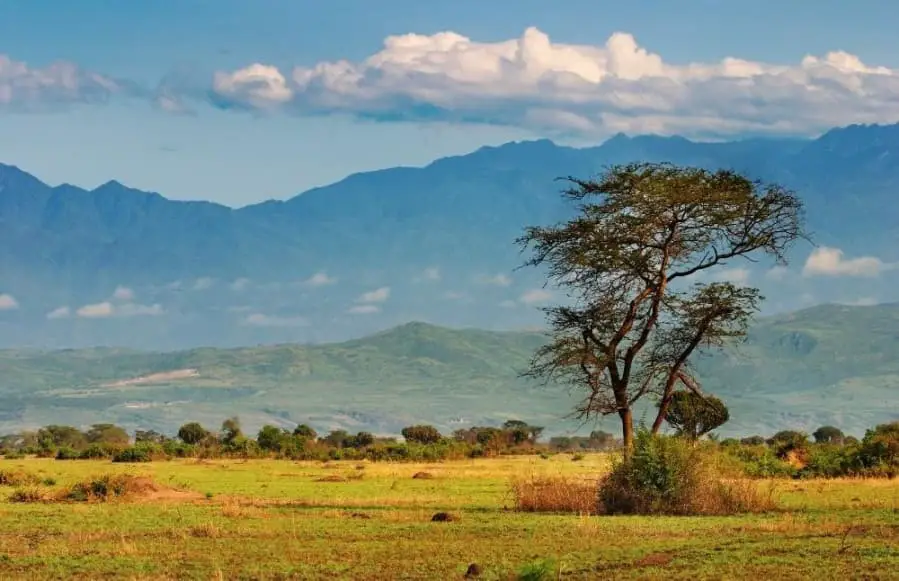
The Rwenzori’s – the fabled Mountains of the Moon – lie in western Uganda along the Uganda-Congo border. The equatorial snow peaks include the third highest point in Africa, while the lower slopes are blanketed in moorland, bamboo and rich, moist montane forest. Huge tree-heathers and colourful mosses are draped across the mountainside with giant lobelias and “everlasting flowers”, creating an enchanting, fairytale scene.
Rwenzori Mountains National Park protects the highest parts of the 120km-long and 65km-wide Rwenzori mountain range. The national park hosts 70 mammals and 217 bird species including 19 Albertine Rift endemics, as well as some of the world’s rarest vegetation.
The Rwenzoris are a world-class hiking and mountaineering destination. A nine- to twelve-day trek will get skilled climbers to the summit of Margherita – the highest peak – though shorter, non-technical treks are possible to scale the surrounding peaks.
For those who prefer something a little less strenuous, neighbouring Bakonzo villages offer nature walks, homestead visits home cultural performances and accommodation, including home-cooked local cuisine.
Murchison Falls National Park
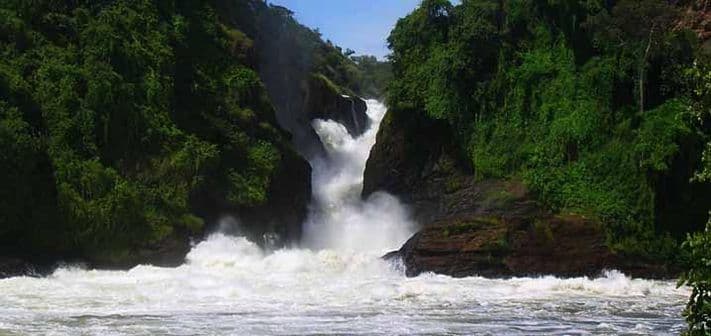
Murchison Falls National Park lies at the northern end of the Albertine Rift Valley, where the sweeping Bunyoro escarpment tumbles into vast, palm-dotted savanna. First gazetted as a game reserve in 1926, it is Uganda’s largest and oldest conservation area, hosting 76 species of mammals and 451 birds.
The park is bisected by the Victoria Nile, which plunges 45m over the remnant rift valley wall, creating the dramatic Murchison Falls, the centrepiece of the park and the final event in an 80km stretch of rapids. The mighty cascade drains the last of the river’s energy, transforming it into a broad, placid stream that flows quietly across the rift valley floor into Lake Albert. This stretch of river provides one of Uganda’s most remarkable wildlife spectacles. Regular visitors to the riverbanks include elephants, giraffes and buffaloes; while hippos, Nile crocodiles and aquatic birds are permanent residents.
Notable visitors to the park include Winston Churchill, Theodore Roosevelt, Ernest Hemingway and several British royals.
Queen Elizabeth National Park
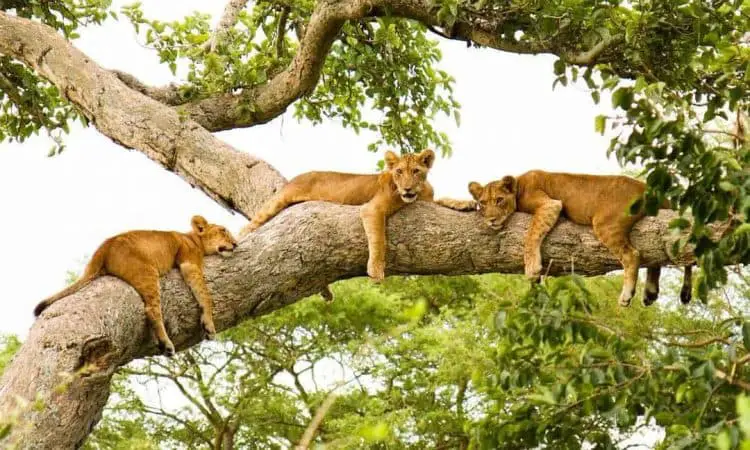
Queen Elizabeth National Park is understandably Uganda’s most popular tourist destination. The park’s diverse ecosystems, which include sprawling savanna, shady, humid forests, sparkling lakes and fertile wetlands, make it the ideal habitat for the classic big game, ten primate species including chimpanzees and over 600 species of birds.
Set against the backdrop of the jagged Rwenzori Mountains, the park’s magnificent vistas include dozens of enormous craters carved dramatically into rolling green hills, panoramic views of the Kazinga Channel with its banks lined with hippos, buffalo and elephants, and the endless Ishasha plains, whose fig trees hide lions ready to pounce on herds of unsuspecting Uganda kob.
As well as its outstanding wildlife attractions, Queen Elizabeth National Park has a fascinating cultural history. There are many opportunities for visitors to meet the local communities and enjoy storytelling, dance, music and more. The gazetting of the park has ensured the conservation of its ecosystems, which in turn benefits the surrounding communities.
Mgahinga Gorilla National Park

The last but not the least is Mgahinga Gorilla National Park sits high in the clouds, at an altitude of between 2,227m and 4,127m. As its name suggests, it was created to protect the rare mountain gorillas that inhabit its dense forests, and it is also an important habitat for the endangered golden monkey.
As well as being important for wildlife, the park also has a huge cultural significance, in particular for the indigenous Batwa pygmies. This tribe of hunter-gatherers was the forest’s “first people”, and their ancient knowledge of its secrets remains unrivalled.
Mgahinga’s most striking features are its three conical, extinct volcanoes, part of the spectacular Virunga Range that lies along the border region of Uganda, Congo and Rwanda. Mgahinga forms part of the much larger Virunga Conservation Area which includes adjacent parks in these countries. The volcanoes’ slopes contain various ecosystems and are biologically diverse, and their peaks provide a striking backdrop to this gorgeous scenery. Ref: to Uganda Wildlife Organization
WHAT TO PACK
Waterproof hiking sturdy boots.
They will help you when Gorilla trekking in those slippery wet Mountains.
Sturdy gardening gloves
They will come in handy, in the bush when gorilla trekking especially when you slide, you can hold on to branches to back you up and avoid a nasty fall.
Rain Jacket
Mostly you will hike in the rain and this rain jacket comes in handy to avoid the unnecessary cold. If you are carrying one, carry a light one which you can easily fold and kip in your bag pack until you need it.
African Safari Hat
The scorching sun will burn mercilessly as much as you have sun scream creams you will need back up of a safari hat, they look beautiful on you, remember?
Insect Repellent
During the trek you come across different insects, therefore, wears a lot of insect repellent will protect you, also you can apply a sunblock cream on your exposed body parts.
For trackers who are on a Gorilla Habituation Experience, which takes a full day are advised to bring the repellent in their daypack.
Warm Sweater
Someone might wonder, a sweater in Africa? Yes, and it is important that you carry one or a cardigan to be worn in the early mornings and cool nights. It really gets so cold at night. In Mgahinga Gorilla Park or Volcanoes National Park, the temperature is at10°C/50°F and in Bwindi Impenetrable it’s at11°C/52°F and sometimes it’s lower than this.
What is the right colour for your safari clothes?
Bright colours should be avoided while carrying out safari activities in the jungle, but these can be used while enjoying dinner back at the lodge. Neutral colours like light brown, green, Khaki are good for safari activities during the day and they are highly recommended all over Africa, in Kenya, Tanzania, Uganda, Rwanda, South Africa, Botswana and so much more. Black and blue shirts are not good in the jungle since they attract tsetse fl

